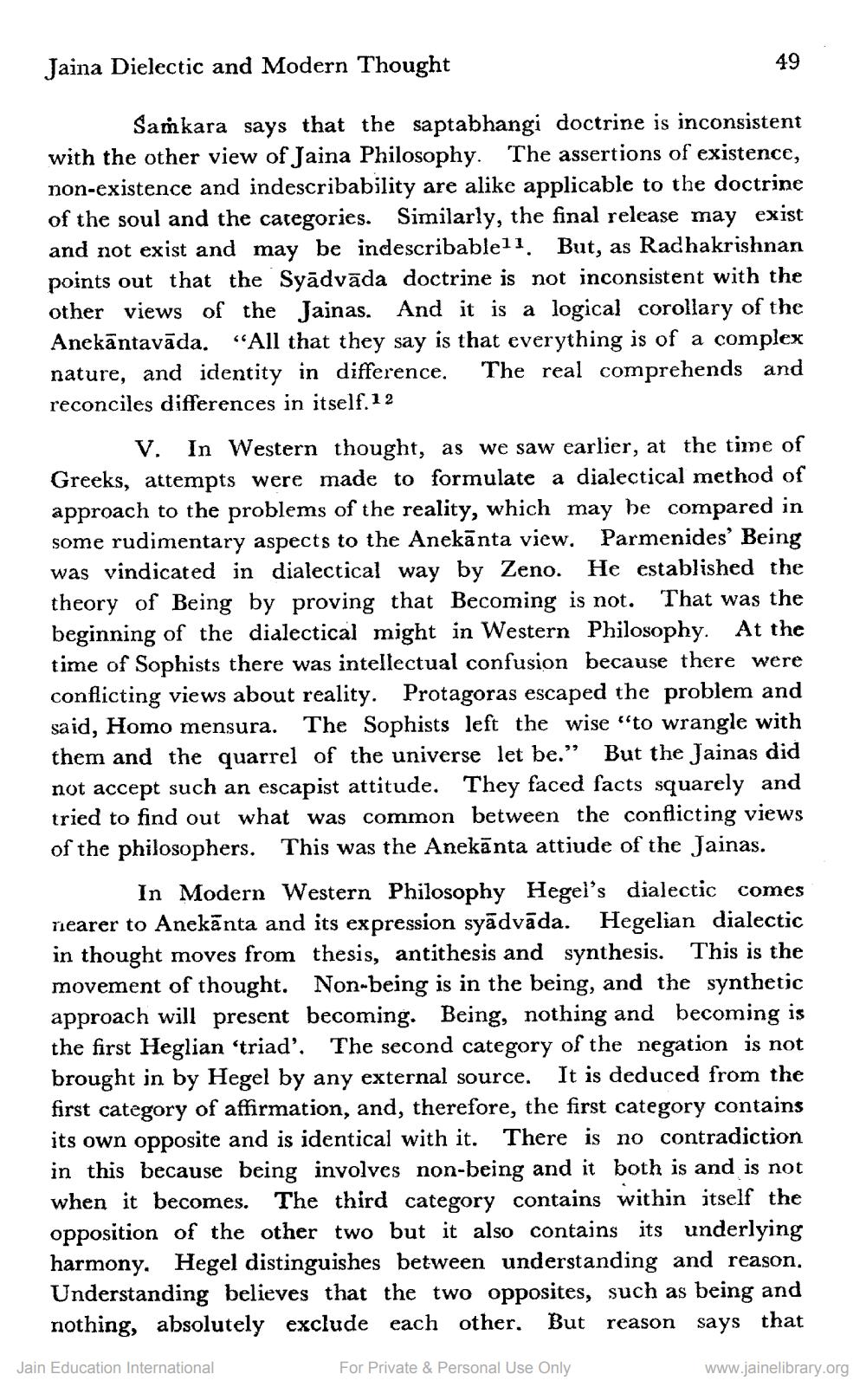________________
Jaina Dielectic and Modern Thought
49
Saṁkara says that the saptabhangi doctrine is inconsistent with the other view of Jaina Philosophy. The assertions of existence, non-existence and indescribability are alike applicable to the doctrine of the soul and the categories. Similarly, the final release may exist and not exist and may be indescribablell. But, as Radhakrishnan points out that the Syādvāda doctrine is not inconsistent with the other views of the Jainas. And it is a logical corollary of the Anekāntavāda. “All that they say is that everything is of a complex nature, and identity in difference. The real comprehends and reconciles differences in itself.12
V. In Western thought, as we saw earlier, at the time of Greeks, attempts were made to formulate a dialectical method of approach to the problems of the reality, which may be compared in some rudimentary aspects to the Anekānta view. Parmenides' Being was vindicated in dialectical way by Zeno. He established the theory of Being by proving that Becoming is not. That was the beginning of the dialectical might in Western Philosophy. At the time of Sophists there was intellectual confusion because there were conflicting views about reality. Protagoras escaped the problem and said, Homo mensura. The Sophists left the wise "to wrangle with them and the quarrel of the universe let be.” But the Jainas did not accept such an escapist attitude. They faced facts squarely and tried to find out what was common between the conflicting views of the philosophers. This was the Anekānta attiude of the Jainas.
In Modern Western Philosophy Hegel's dialectic comes nearer to Anekānta and its expression syādvāda. Hegelian dialectic in thought moves from thesis, antithesis and synthesis. This is the movement of thought. Non-being is in the being, and the synthetic approach will present becoming. Being, nothing and becoming is the first Heglian 'triad'. The second category of the negation is not brought in by Hegel by any external source. It is deduced from the first category of affirmation, and, therefore, the first category contains its own opposite and is identical with it. There is no contradiction in this because being involves non-being and it both is and is not when it becomes. The third category contains within itself the opposition of the other two but it also contains its underlying harmony. Hegel distinguishes between understanding and reason. Understanding believes that the two opposites, such as being and nothing, absolutely exclude each other. But reason says that
Jain Education International
For Private & Personal Use Only
www.jainelibrary.org




